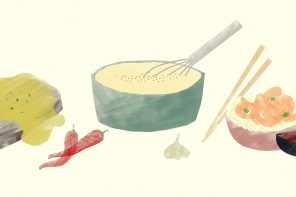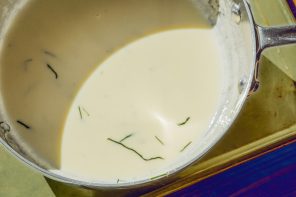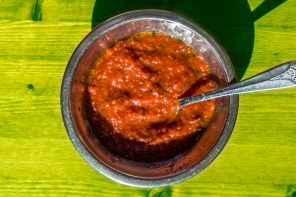Dip it. Smear it. Pour it. Smother it. Some of us would bathe in it given the opportunity. However you choose to enjoy it, people love sauce, but have you ever wondered why we love putting sauce on our food? The answer is simple: umami.
It’s possible you’ve heard the word “umami” emanating from the TV as your roommate watches “Chef’s Table,” or perhaps you heard whispers of it from a waiter as they elaborately described a dish at that trendy restaurant you just went to. Suffice to say, the word itself is not foreign, just its meaning. You’ve definitely experienced it, too. Have you ever struggled to put down a can of Pringles? That’s the addictive power of umami at work.
Sweet, sour, salty and bitter. Most are familiar with the four basic tastes, but there remains a cloud of mystery around the most recent addition to the group. Some describe it as earthy. Some describe it as meaty. Umami is the pleasant savory taste which leaves you with an almost insatiable appetite, constantly wanting more, and unable to resist reaching your hand into that Pringles can.
Umami, which translates to “deliciousness” in Japanese, was discovered at the beginning of the 20th century by Japanese chemist Kikunae Ikeda who was motivated to identify a specific meaty flavor he tasted in dashi, a traditional Japanese broth made from seaweed that’s a staple in the cuisine. His curiosity lead him to discover an amino acid called glutamic acid — the chemical compound behind umami’s flavor.
Although umami was only recently coined and described, this flavor has been around in many cultures for centuries through fermentation, cooking, curing or aging — all processes that break down the amino acids that release the umami.
Ancient Romans regularly used fermented fish sauce as a flavor enhancer. Chinese still use fermented fish sauces and soy sauce to bring the distinct umami flavor to their food. The Japanese also strive to achieve umami, which is apparent by their prominent use of dashi and bonito flakes.
If you’re not planning on curing your own meats in a barn or fermenting incredibly pungent fish anytime soon, you can find umami in foods that have aged and are just on the cusp of rot like parmesan cheese, cured meats, aged steaks, anchovies, roasted tomatoes, mushrooms and bonito flakes. Incorporating these ingredients into your recipes can add a complexity and depth of flavor that will transform your food. Enter sauce.
Sauces often include ingredients naturally rich in umami and usually require extended cook times, which break down those amino acids and releases the umami flavor. Think dashi in Japanese cuisine and demi-glace in French cuisine. There is, however, another way to get that sexy flavor into your food.
Say hello to the flavor enhancer MSG that mimics umami and is frequently found in Chinese food, chip seasoning, Ranch dressing, pre-packaged soups and some fast food. Many believe consuming large amounts of monosodium glutamate can lead to headaches, stomach aches and lethargy, but that’s a debate for another time.
To understand why we crave umami, we must tap into our hunter-gatherer mindset. Much like how we avoid bitter flavors because they’re an indicator of poisonous foods, we crave umami because its flavor is an indicator of protein, which gives us energy. Energy is cool and all, but we also have an instinct to protect ourselves from ingesting toxins and food-borne illnesses that come from consuming uncooked meat.
Rarely is a dish complete without some sort of sauce element and umami is a large reason behind that. It’s the component that enhances and marries all the elements in a dish. It’s the flavor you never knew existed, but now that you’ve discovered it, you can’t get enough of it.








